10 DIY Garden Irrigation System Plans You Can Make Today (With Pictures)
-
- Last updated:
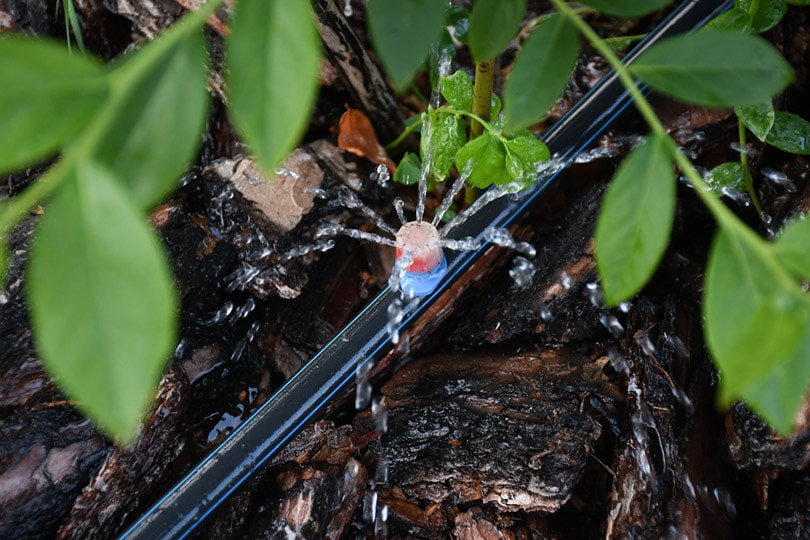
Gardens without irrigation systems can be a constant source of anxiety. What if the garden dries out? Who will water my garden when I’m out of town? Why are irrigation systems so expensive? These are all questions that plant owners have thought to themselves at least once. The good news is there are a plethora of unique ways to irrigate your garden without breaking the bank. In fact, there are a ton of ingenious ideas that can be put together in an afternoon by hand.
Here are ten do-it-yourself irrigation systems with plans that you can make today.

The 10 DIY Garden Irrigation System Plans
1. DIY PVC Garden Waterer
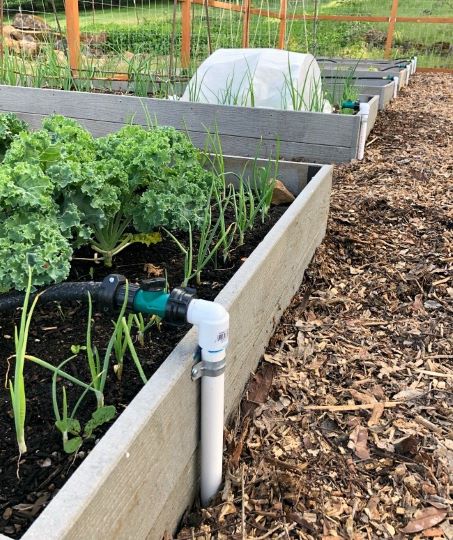
| Materials: | On/off valve, digital water timer, soaker hoses, PVC glue, enough PVC pipe to cover your garden area, screws |
| Tools: | Drill, shovel. Gloves, PVC cutter |
| Complexity: | Advanced |
Having irrigation professionally installed can be expensive and time-consuming. However, there are ways to put in full irrigation systems yourself without the need to call unreliable contractors. This PVC Garden Watering System runs on a digital water timer and gets connected to your hose spigot. These extensive plans will allow you to confidently install your very own irrigation system. They even made the supply list printable for your convenience.
The whole system runs on a timer and uses a series of cleverly placed on/off valves that allows the whole thing to function as a professional closed system just with your standard hose. In just a few hours, you can have your entire garden rigged to water itself on a timer without any input from you and without the need for expensive professional help.
2. Plastic Bottle Drip System
| Materials: | 2-liter bottle, metal wire, rubber tube |
| Tools: | Wire cutter, scissors, gloves |
| Complexity: | Basic |
If you are looking for a simple way to cleverly water your plants, then look no further. For just a few bucks and less than an hour, you can rig up an ingenious drip irrigation system that is perfect for plants that need to stay moist without having to constantly water them. All you have to do is fill a 2-liter bottle with water, rig the tube up so that it faces downwards, and watch as the water slowly drips out. The wire is used to keep the tube in place and to keep the bottle upright and nearby the plants. There are few DIY irrigation systems that are cheaper or more effective than this simple solution.
3. Elevated IV Bottle Irrigation System
| Materials: | 2-liter bottle, rope, IV catheter, rubber tube |
| Tools: | Gloves, something to poke holes in the bottle, scissors |
| Complexity: | Intermediate |
This bottle drip system uses the power of gravity to slowly irrigate your plants using some common household items. This irrigation system works like an IV in a hospital. You hang the water over the plants and allow the water to slowly drip down the tube using an actual IV as the slowing mechanism. It works flawlessly and can keep a plant watered for two days. This is an inexpensive way to make sure your plants are watered when you are on vacation or preoccupied. You can make a handful of these IV bottle waterers in an afternoon.
4. Bucket Irrigation

| Materials: | 5-gallon bucket, bucket lid, drip line tubing, inline dripper, screened connector |
| Tools: | Pliers, forceps, shears, safety pin |
| Complexity: | Basic |
This bucket irrigation system is extremely simple and is used by farmers and gardeners around the world. For just a few dollars, you can get a consistent dripper out of a simple 5-gallon bucket. This bucket dripper uses an inline dripper and a simple ¼-inch tube to create a great irrigation system. Following this plan will only take about an hour from start to finish. The bucket dripper has a much larger capacity than similar 2-liter dripper designs. In fact, a 5-gallon bucket can hold 18 liters worth of water. That means a lot more irrigation power for the same amount of money and effort.
5. Rainwater Drip System

| Materials: | Rain barrel, drip line, main line (lengths will be determined by the distance to the garden) |
| Tools: | Pliers, gloves, waterproof tape |
| Complexity: | Basic |
The hardest part about this design is obtaining rain barrels that work for your space. If you already have rain barrels, you are 90% of the way there. If you already have rain barrels and are looking for a better way to distribute the water, this project will be extremely affordable. This rainwater drip system utilizes rain barrels to distribute natural rainwater through a slow drip line to your thirsty plants. This plan works best when the rain barrels are elevated, but that is not feasible for everyone. If your rain barrels are on or near the ground, you will still get a drip, but it will be much slower than an elevated rain barrel.
6. Easy Soaker Hose System
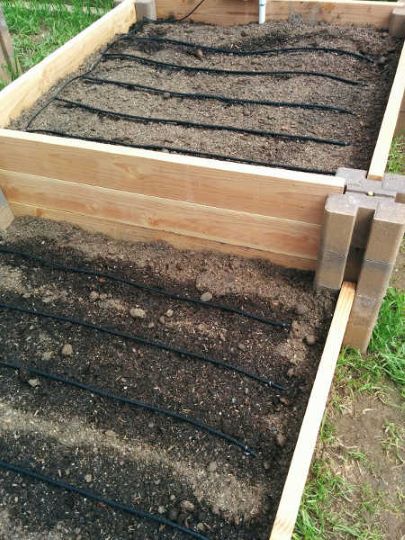
| Materials: | Soaker hose, regular garden hose, hose timer (optional) |
| Tools: | Pliers, shears |
| Complexity: | Basic |
Soaker hoses are a great alternative to drip irrigation. These special hoses are made of a unique material that allows water to ooze out slowly over time and get absorbed by the surrounding soil. This soaker hose installation plan can be quickly completed in one afternoon. All you must do is cut the soaker hoses into lengths, line your garden with them and then connect them using pliers before hooking them up to a regular garden hose. You can add an optional timer to help automate the irrigation process. Many gardening centers sell soaker hose kits, but you can also do it yourself with very little effort involved.
7. Micro Spray Irrigation For Raised Beds
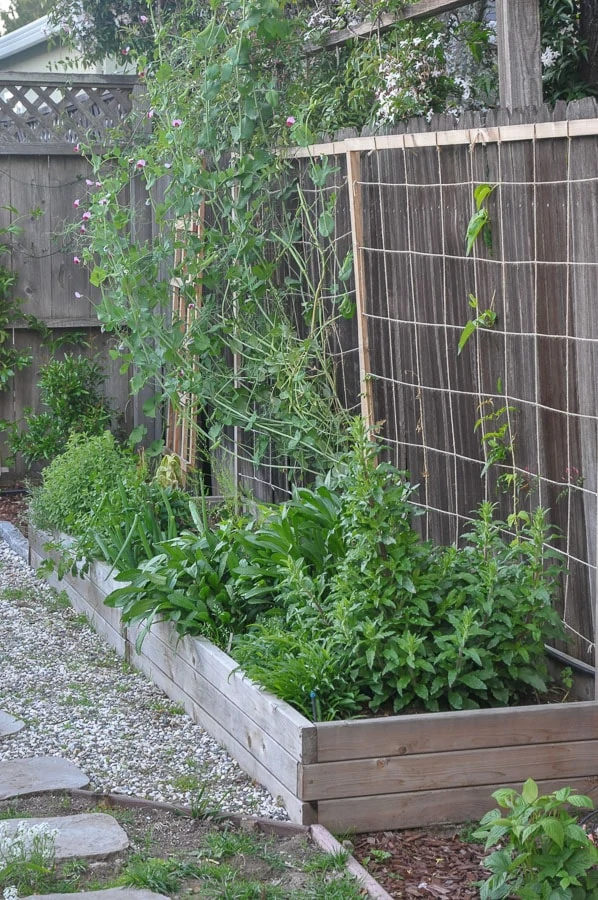
| Materials: | ½-inch distribution tube, ¼-inch distribution tube, barbed tee, barbed couplings, 90-degree micro spray heads, 180-degree micro spray heads |
| Tools: | Shovel, Gloves, tubes, scissors, pliers |
| Complexity: | Intermediate |
Instead of simply using a basic drip irrigation system, as we have seen before, this irrigation plan modifies that idea and turns it into a brilliant micro spray system. This plan proceeds similarly to other plans by using drip lines around a garden bed, but instead of simply letting the water drip freely into the soil, it runs into special micro spray heads that will take that drippage and turn it into a fine mist. Some plants prefer mist and really benefit from having wet foliage. This is a great system that is a little more involved than the typical drip system but also has a completely different output method.
8. Embedded Irrigation System For Raised Beds
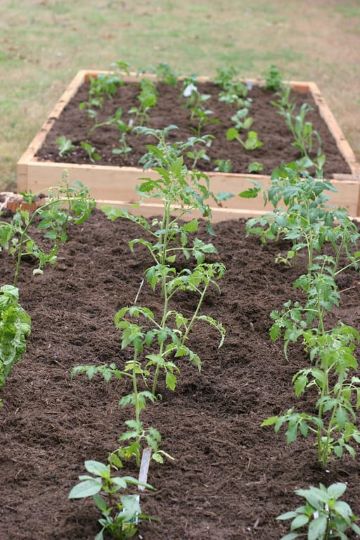
| Materials: | Rubber tubing, drip line, tee connector, barb connector, hose, gasket, waterproof tape |
| Tools: | Shovel, drill, heavy object, hole punching tool |
| Complexity: | Intermediate |
This embedded irrigation system is perfect for raised beds. By burying irrigation lines and drip lines in the middle of your beds, you can slowly irrigate your plants without having to water them every day. This plan is fairly simple and utilizes a hose connection to pump your irrigation lines full of water. Then the lines slowly irrigate your beds over a period of time from the inside out. This is a great way to always keep the soil in your raised bed moist. If you are trying to get better vegetable yields, this plan is perfect for helping with that as well.
9. Buried Bottle Irrigation
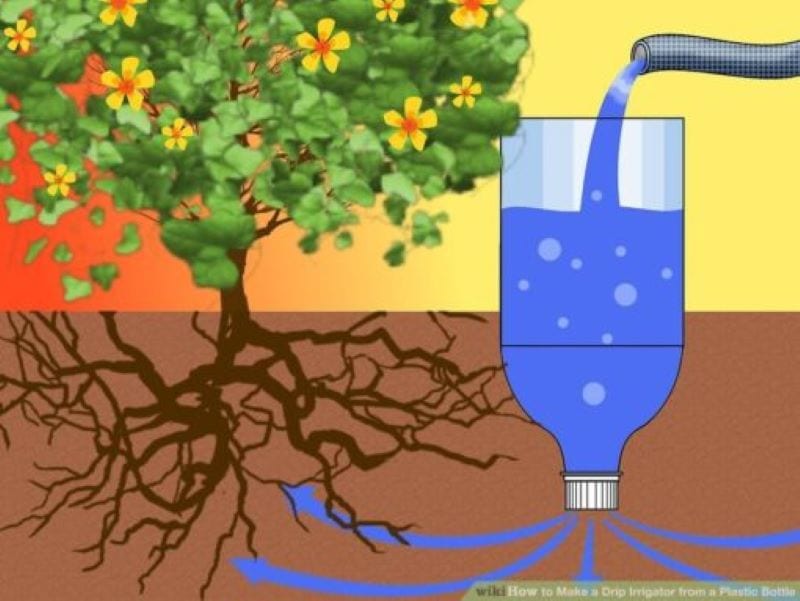
| Materials: | 2-liter bottles, rubber tube, gasket |
| Tools: | Scissors, screwdriver, garden shovel |
| Complexity: | Basic |
There are a variety of ways to rig up a plastic bottle to slowly seep water into the soil. These ideas cover three distinct methods of burying a plastic bottle and setting it up to produce the perfect level of flow for your individual plants. With just a few plastic bottles, a pair of scissors, and some water, you can start irrigating your garden in just a couple of hours. This system runs on gravity and holes to produce a simple and environmentally friendly DIY irrigation system. This plan also has the benefit of also reusing plastic bottles that would otherwise go into the trash, which also helps the planet in the long run.
10. Clay Pot Irrigation
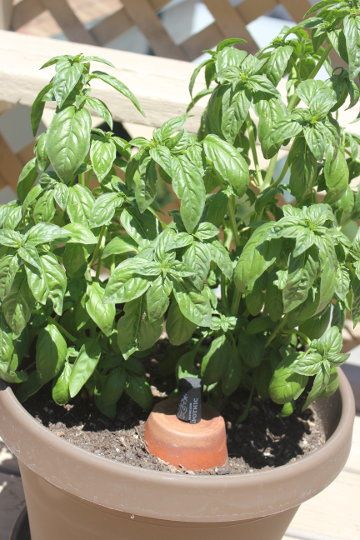
| Materials: | A pair of terracotta pots, a cap |
| Tools: | Glue (or similar adhesive), garden shovel |
| Complexity: | Basic |
Did you know you can irrigate a garden with those basic red clay flowerpots? This is a great irrigation system because it is super easy to build, and it is extremely affordable. The clay pot irrigation system uses just two identical clay pots to create an underground reservoir that slowly seeps water into the surrounding soil. All you have to do is join the two pots together using glue to make a small cistern and then bury it in your garden, leaving just the top exposed. Fill water through the top and cap it to keep bugs out. And that is it. This can be done as many times as necessary and is an ancient system that utilizes the porous nature of clay to its advantage.

Benefits Of Setting Up An Irrigation System
There are multiple benefits of setting up even a basic irrigation system. One of the best is that it changes a plant’s watering cycle from a lot of water in small bursts to consistent water throughout the day. The increased consistency can help vegetable yields and keep plants healthier through the hot months of the year. It is true for most garden plants. The wetter, the better.
Another great benefit of irrigation systems is the ability to keep your plants water without constant attention. Whether you want to go on vacation or are just really busy and sometimes forget to water your garden, an irrigation system will keep your plants wet without a lot of input. Instead of standing and watering the garden multiple times a week, many systems allow you to just hit a switch or put it on a timer. Irrigation decreases input while increasing output which is a great trade-off.

Conclusion
Whether you are a complete garden novice or an adept green thumb, there is a plan here that will work for your garden. Many of these plans are super simple and upscale reusable materials for a great new purpose. Every garden can benefit from some sort of irrigation that is better than you standing in the lawn in your underwear, blearily watering your plants before the neighbors wake up. Both you and your plants will be happier with any one of these DIY irrigation systems.
Featured Image Credit: Alin_Kris, Shutterstock
Contents

